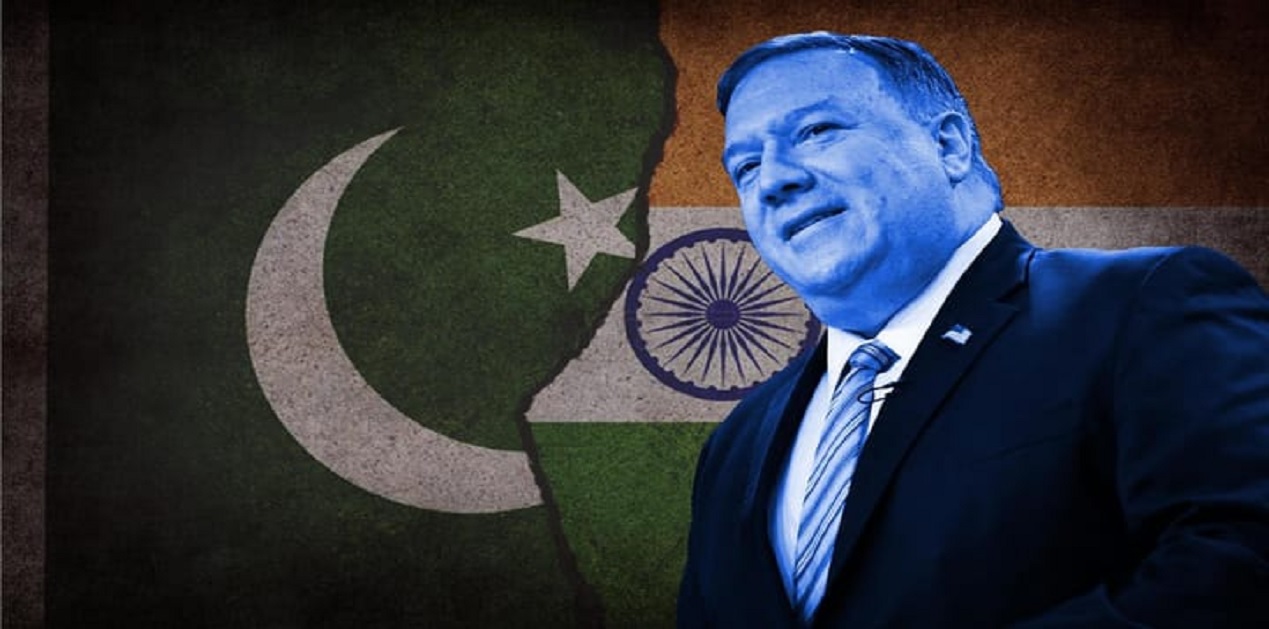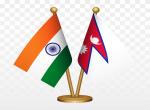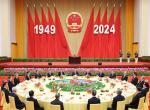Former US Secretary of State Mike Pompeo’s recent claim that India and Pakistan were on the brink of a nuclear war after India conducted the Balakot airstrike in February 2019 has rekindled fears over the fragile state of deterrence relationship between India and Pakistan. Moreover, Pompeo’s statements in his latest book ‘Never Give an Inch: Fighting for the America I Love” has pointed towards the centrality of US role in defusing crises between India and Pakistan especially in the post-nuclearization era. He has mentioned in the book that the then Indian External Affairs Minister Sushma Swaraj had called him to inform that Pakistan was preparing for a nuclear attack on India after the Balakot airstrikes and India was preparing its own escalatory response. Pompeo and his team worked overnight with both New Delhi and Islamabad to de-escalate tensions.
The airstrike which Pompeo is referring to was executed by India in the aftermath of the terrorist attack in Pulwama, a district in Jammu and Kashmir that claimed the lives of 40 CRPF jawans. Indian warplanes pounded on a terrorist training camp of Jaish-e-Mohammad in Balakot, Khyber Pakhtunkhwa. This was India’s first aerial operation inside Pakistani territory since the war in 1971. Pakistan retaliated with its share of airstrikes that was limited to the Indian side of LoC (Line of Control) and the ensuing dogfight resulted in the capture of an Indian pilot by Pakistan who was later released.
The US role has always been a crucial factor in moderating crises between India and Pakistan especially under the nuclear shadow. Several think tanks and policymakers of USA have frequently drawn our attention to the rather ‘precarious’ strategic environment in South Asia where war of any scale between India and Pakistan can escalate to the nuclear level due to the ‘irrational’ strategic behaviour of the actors concerned. Therefore, US intervention is portrayed to be indispensable in any Indo-Pak crisis without which an all out nuclear war would be the only reality. Pompeo’s recent revelation reinstates this viewpoint. It indirectly depicts how India and Pakistan are walking a tightrope when it comes to maintaining the sanctity of nuclear deterrence in the region. It is not actually the case as this article seeks to argue that despite the projection of an imminent nuclear danger in South Asia, both India and Pakistan have shown considerable restraint in their actions during a crisis. A curious look at the intricacies of nuclear deterrence in the region proves that the ‘back from the brink’ thesis of US experts is overhyped in this sense and so is the significance of US role. In fact, USA’s image as a neutral mediator has undergone a noteworthy change in the past few years and contrary to the claims made by Pompeo, Washington showed its reluctance to get involved early in the Balakot episode. Hence, the article highlights the need to look beyond the mediatory role played by US and build a refined understanding of deterrence stability in South Asia.
Understanding the Subtleties of Indo-Pak Nuclear Relationship
Both Balakot air raid in 2019 and the surgical strikes of 2016 (also referred to as Uri surgical strikes) have indicated a departure from the status-quo that existed so far in the sub-continent after the nuclear tests of 1998. The Indian leadership under Prime Minister Narendra Modi looked very keen to raise the military costs for Pakistan by launching limited conventional strikes that sought to destroy terrorist infrastructure located in Pakistan. The viability of such strikes has been questioned on the assumption that they carry inherent risks of escalation owing to the ‘First Use’ nuclear doctrine of Pakistan. Ever since Pakistan became a nuclear power in 1998, it has recognized the importance of its nuclear arsenal in maintaining strategic parity with India. Hence, Islamabad has deliberately kept its nuclear threshold low in order to cancel out the advantage India holds in terms of conventional warfare. This strategy of Pakistan seems to be rational in deterring a militarily stronger and larger neighbour like India.
Even though Pakistan has a First-Use nuclear doctrine it doesn’t mean that Pakistan would launch its nuclear weapons at the first instance of an Indian attack in its soil. Pakistan’s nuclear weapons ensure its survival hence its nuclear doctrine should be read as First- Use as last resort. This implies that as long as India does not threaten the existence of Pakistani state, it is unlikely that Pakistan will resort to the use of nuclear weapons. India’s strategic community is very much aware of this fact as it gets reflected in the calibrated nature of military actions conducted so far by New Delhi. The surgical strikes are pre-emptive in nature that aims to cut off any threat of terrorist infiltration from the launch pads in Pakistan Occupied Kashmir (PoK) and nothing more than that. It also contributes in addressing the demands of the domestic audience who call for undertaking punitive actions against Pakistan.
The fear that any use of military force would result in nuclear escalation is also misplaced and is a manifestation of viewing the nuclear dynamics of South Asia through Cold War history. While the US and Soviet Union deployed nuclear weapons on hair-trigger alert, this isn’t the case in South Asia, where neither side deploys ready to use weapons. Pakistan’s Tactical Nuclear Weapons (TNWs) might be construed as a threat but it is not yet clear whether Islamabad will risk using it as the prospect of even a limited nuclear war could be highly devastating. In addition to that there is also the problem of delegating command and control of TNWs to battlefield officers who face the dilemma of use them or lose them during war. The mutual possession of nuclear weapons has prevented Pakistan from following the strategy of brinksmanship during a crisis.
During the Balakot crisis Pakistan decided to climb down the escalation ladder by releasing the Indian pilot and Prime Minister Imran Khan also said that with the kind of weapons both India and Pakistan possess, it is not in anyone’s interest to go for escalation. Pakistan's retaliatory airstrikes were only a show of resolve as it did not hit any non-military targets and was restricted to Kashmir itself. Even during the Kargil War, Pakistani Prime Minister Nawaz Sharif decided to pull back the troops from the areas they occupied in Kargil after his meeting US President Bill Clinton. He decided against bringing in additional forces as that could have escalated the war to unprecedented levels.
Inconsistency in USA’s Mediatory Role
In recent years, serious doubts have been cast over the role of US as a neutral arbiter in Indo-Pak crises. Washington’s leverage over both India and Pakistan became visible during the Kargil war of 1999, the Twin Peaks Crisis of 2001-02 and the Mumbai attacks of 2008. In all these crises, US interlocutors were prompt in playing a direct and decisive role at a very early stage. Concerns of nuclear proliferation and the important position occupied by Pakistan in USA’s strategic calculations in Afghanistan were the primary reasons why Washington played a stellar role in defusing crisis in the region. However, the USA’s consistency as a neutral mediator has come under scrutiny when it extended implicit support for India’s retaliatory responses in 2016 and 2019 by refraining from making any kind of remarks that condemned the Indian actions. US mediation was not forthcoming until late in the February 2019 crisis which is a testimony of its waning influence over India and Pakistan. It should be noted here that it was Mike Pompeo who defined the Balakot strikes as a ‘counter-terrorism operation’ following his telephonic conversation with Ajit Doval, the National Security Advisor of India.
The reasons for the shift in USA’s stance can be said to be due to the changes that have taken place in the strategic landscape of the region in the past decade. The US embraced India as a strategic partner in its ‘Pivot to Asia’ policy with the aim of balancing a rising China with its belligerent moves in East and South East Asia. This had occurred at a time when Pakistan had gradually moved closer to China following the launch of China-Pakistan Economic Corridor (CPEC) in 2015. Relations between Pakistan and US have also suffered a decline after Washington became increasingly wary of Pakistan’s duplicity in Afghanistan and its tacit support for Islamist jihadi outfits like the Taliban and Al-Qaeda. Hence, despite Pompeo’s claim that US mediation helped in avoiding a nuclear war between India and Pakistan during the Balakot crisis, one must take an unbiased note of whether USA is any longer willing to play a neutral role in defusing crises in South Asia especially under the changed geopolitical circumstances.
Conclusion
It is high time that we stop taking claims made by US policymakers regarding the stability of nuclear deterrence in South Asia at face value. The recent one has come from former US Secretary of State Mike Pompeo who has disclosed in his newly released book that US mediation brought back India and Pakistan from the brink of a nuclear war after the Balakot airstrike in February 2019. Needless to say, Pompeo’s claim is in line with the conventional thinking in the policy circles of USA that any crisis between new nuclear powers is bound to escalate inadvertently to the nuclear level due to the ‘irresponsible’ and ‘immature’ behaviour of the actors involved. But a closer look shows that the situation is not all that dangerous.
Both India and Pakistan have been cautious to avoid escalation at crucial junctures of a crisis and India’s military actions have been calibrated enough to avoid breaching the nuclear redlines of Pakistan. The gap between a conventional war and a nuclear war is lot wider than what is acknowledged by deterrence pessimists in USA and their supporters in South Asia. Yes, nuclear South Asia is different from that of Cold War Europe, the prospects for deterrence stability is brighter in South Asia than what existed in Europe at the peak of US-Soviet rivalry. Therefore, the glorification of US role in avoiding a nuclear catastrophe in South Asia should be subjected to deeper evaluation mainly at a time when serious apprehensions have been cast over neutral third party mediation in South Asia by USA.
References
- https://economictimes.indiatimes.com/news/defence/mike-pompeo-says-us-averted-nuclear-war-between-india-and-pakistan-post-balakot-air-strikes/videoshow/97297706.cms?from=mdr. Accessed on 27th January, 2023.
- Biswas, A. (2017), Surgical Strikes and Deterrence Stability in South Asia. Observer Research Foundation
- Dalton, T. (2019). Signaling and Catalysis in Future Nuclear Crisesin South Asia: Two Questions After the Balakot Episode. Carnegie Endowment for International Peace.
- Gokhale, N. (2019). Securing India the Modi Way: Balakot, Anti-Satellite Missile Test and More. Bloomsbury.
- Gupta, A. (2014). India, Pakistan and Tactical Nuclear Weapons: Irrelevance for South Asia. Institute of Peace and Conflict Studies.
- Hagerty, D. (2019). Nuclear Weapons and Deterrence Stability in South Asia. Palgrave Macmillan.
- Khajuria, R. (2019). CRPF Jawans killed in Pulwama Terror Attack were Returning from Leave. Hindustan Times.
- Noor, S. (2021). Pulwama/Balakot and The Evolving Role of Third Parties in India-Pakistan Crises. South Asian Voices. Stimson Center.
- Rajagopalan, R. (2005). Second Strike: Arguments about Nuclear War in South Asia. Penguin.
(The paper is the author’s individual scholastic articulation. The author certifies that the article/paper is original in content, unpublished and it has not been submitted for publication/web upload elsewhere, and that the facts and figures quoted are duly referenced, as needed, and are believed to be correct). (The paper does not necessarily represent the organisational stance... More >>
Image Source: https://i.cdn.newsbytesapp.com/images/l25620230125125202.jpeg?tr=w-720


 (1).jpg)








Post new comment